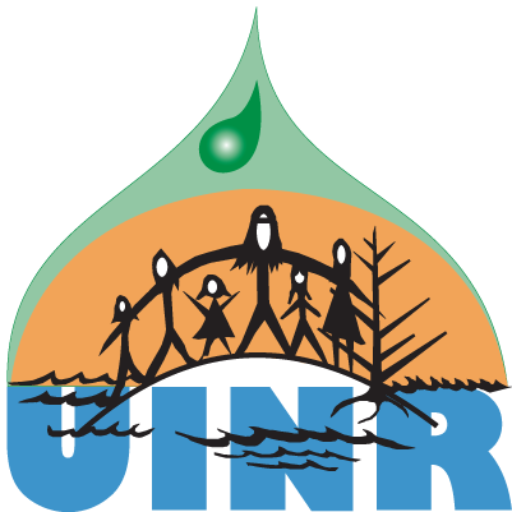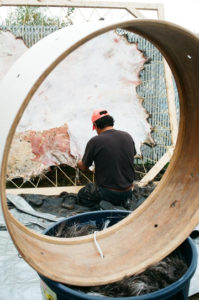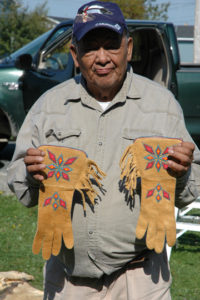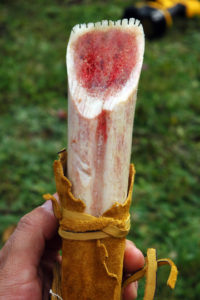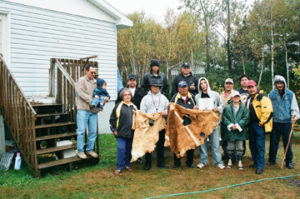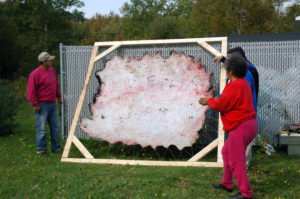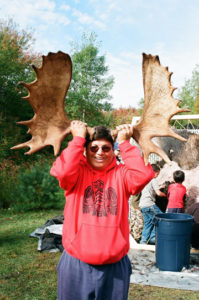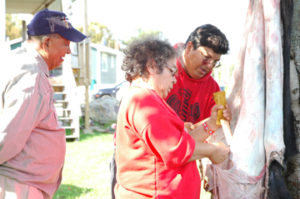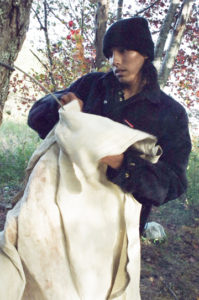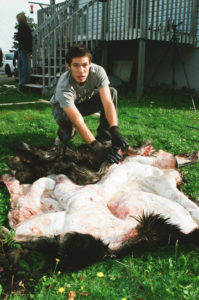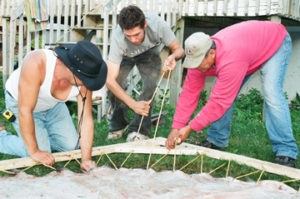While moose provide a fresh supply of meat, historically, the Mi’kmaq depended on moose for many things. Highly-prized moose hides were used for clothing, shelter, and drums, skins were used to make boats, hooves for rattles, and high density shin bones were carved and sharpened as spear tips.
To bring some of that ancient knowledge back into the Mi’kmaq communities, the Moose Working Group and UINR hosted a Moose Hide Preparation Workshop. Traditional hunter Danny Paul acted as host to 11 participants from Unama’ki who completed training in traditional tanning of moose hides.
Ojibway/Cree Elders, Walter and Doris Bonaise, provided instruction using traditional teachings. With much laughter and hard work, participants gained over 80-hours of instruction and are now certified to instruct their respective communities.
The workshop received visits from over 200 people including Elders, students, well-wishers, and the curious. Many commented that bringing back the ancient skill is the right thing to do.
“History was made while an important skill was brought back to our communities” participant Shaylene Johnson noted. “I took time from my classes to learn this ancient knowledge that has been so close to being lost to our people.”
Shaylene is right. Mi’kmaq have been separated from the resource. “Prior to our landmark Supreme Court decisions, it was illegal for Mi’kmaq to hunt moose” Moose Management Initiative Coordinator Clifford Paul noted. “Traditional knowledge about moose was lost with each generation.”
“A strong friendship was created in the training–so much so that they identified the need for future workshops to include outdoor survival, birch bark canoe-making, and even the establishment of a Mi’kmaq encampment for future training” Clifford Paul said. “This is the beginning of something special–something spectacular.”
Â
clifford@uinr.ca
